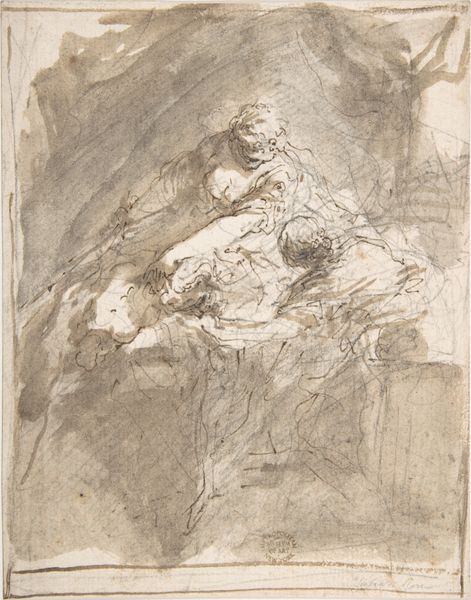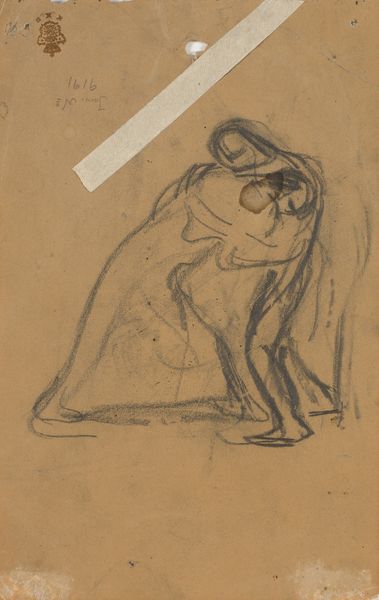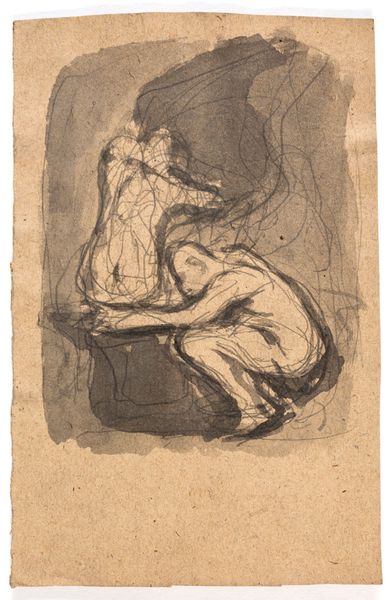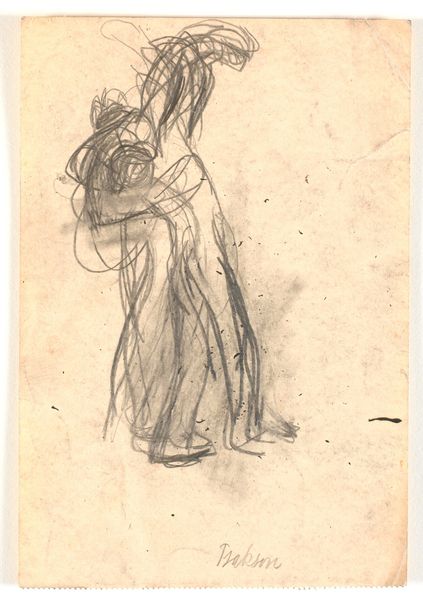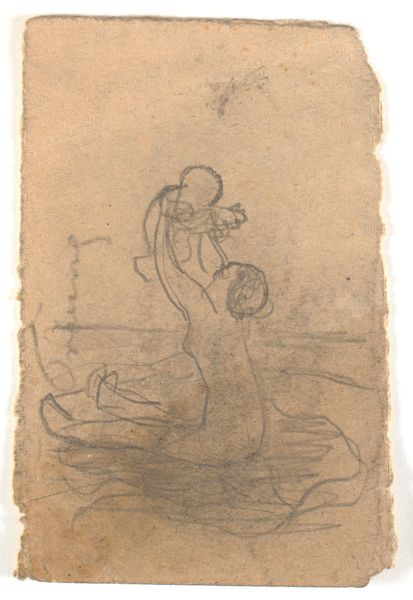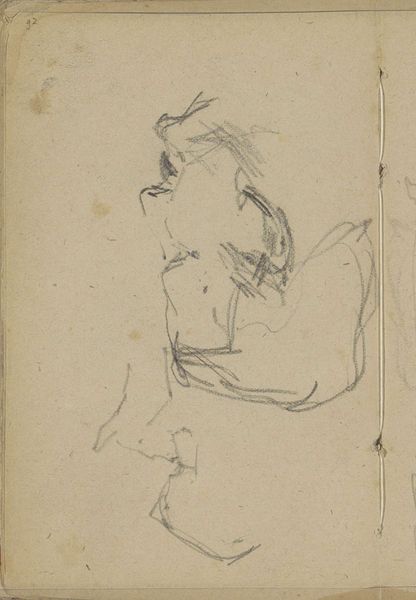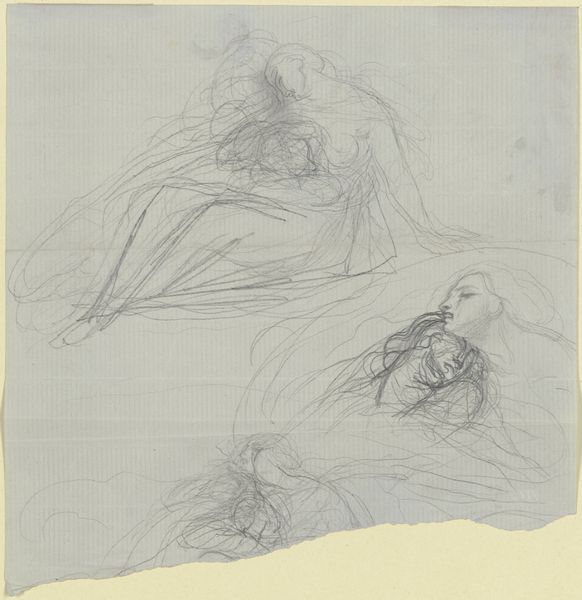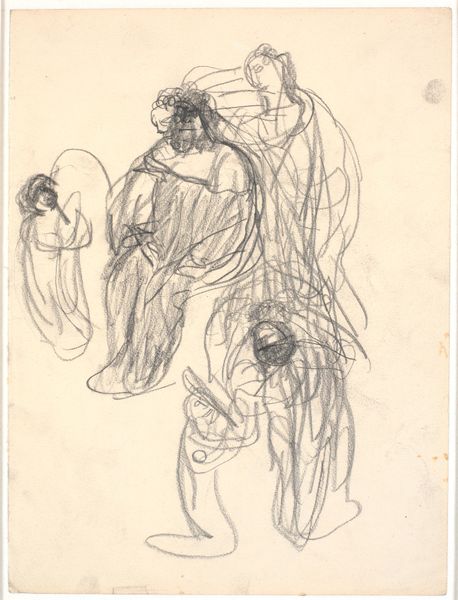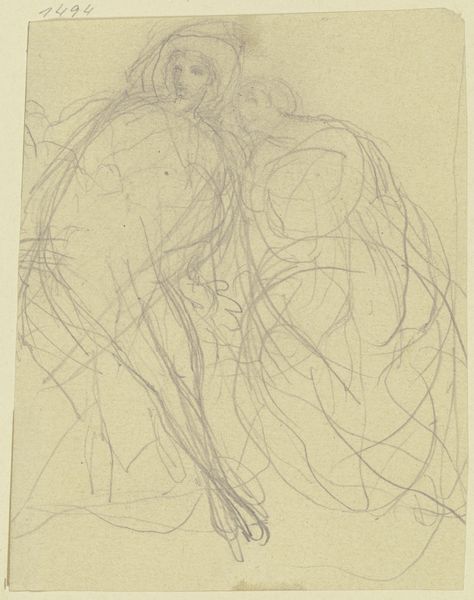
drawing, pencil
#
drawing
#
figuration
#
pencil
#
symbolism
Dimensions: 162 mm (height) x 123 mm (width) (bladmaal)
Curator: Before us is Karl Isakson's "Odin med den døde Balder," a pencil drawing from 1904, currently held at the SMK – Statens Museum for Kunst. Editor: It’s intensely melancholic, isn’t it? The stark lines, the clinging figures…it speaks of grief. Curator: Indeed. Isakson's rendering draws heavily on Norse mythology. We're witnessing Odin, the Allfather, with his deceased son Balder. Considering its creation at the dawn of the 20th century, it speaks to broader anxieties about modernity and a turn towards folklore to negotiate them. Balder, god of light and purity, embodies lost innocence and an unreachable past, really. Editor: Absolutely. The slumped posture and downward gaze become symbolic representations of loss, grief, and the tragic weight of existence. You notice how the figures seem almost swallowed by the shadow of Odin's cloak, or by shadows from an unrealized reality, creating a sense of being enveloped by despair, which itself is visually representative of chaos and uncertainty. Curator: And Odin himself—often rendered as powerful and wise—is reduced here to a figure of palpable anguish. In looking closely, his gesture seems almost like cradling or protection—it speaks volumes about societal expectations of grief and who gets to perform it. The political dimensions of such powerful displays should not be underestimated. Editor: We can see parallels in depictions of the Pietà in Christian iconography, that archetype of a father mourning his son. There is, for example, the cultural association with mourning, sacrifice and redemption, visualized in light, shadow and color throughout the work that becomes the emotional undertow here, amplified by this association of color and culture in Northern European visual lexicons. Curator: A crucial point. Further, Isakson, being a Swede working in Denmark, perhaps navigated Scandinavian identity through revisiting these old stories. These tales spoke not just of myth but of origins and belonging at a pivotal point in European history. Editor: It seems the somber composition has resonated deeply, capturing the bleak realities faced across Europe in those transformative years. Thank you for shedding more light on it. Curator: Thank you; may it lead all to question inherited ideas.
Comments
No comments
Be the first to comment and join the conversation on the ultimate creative platform.


